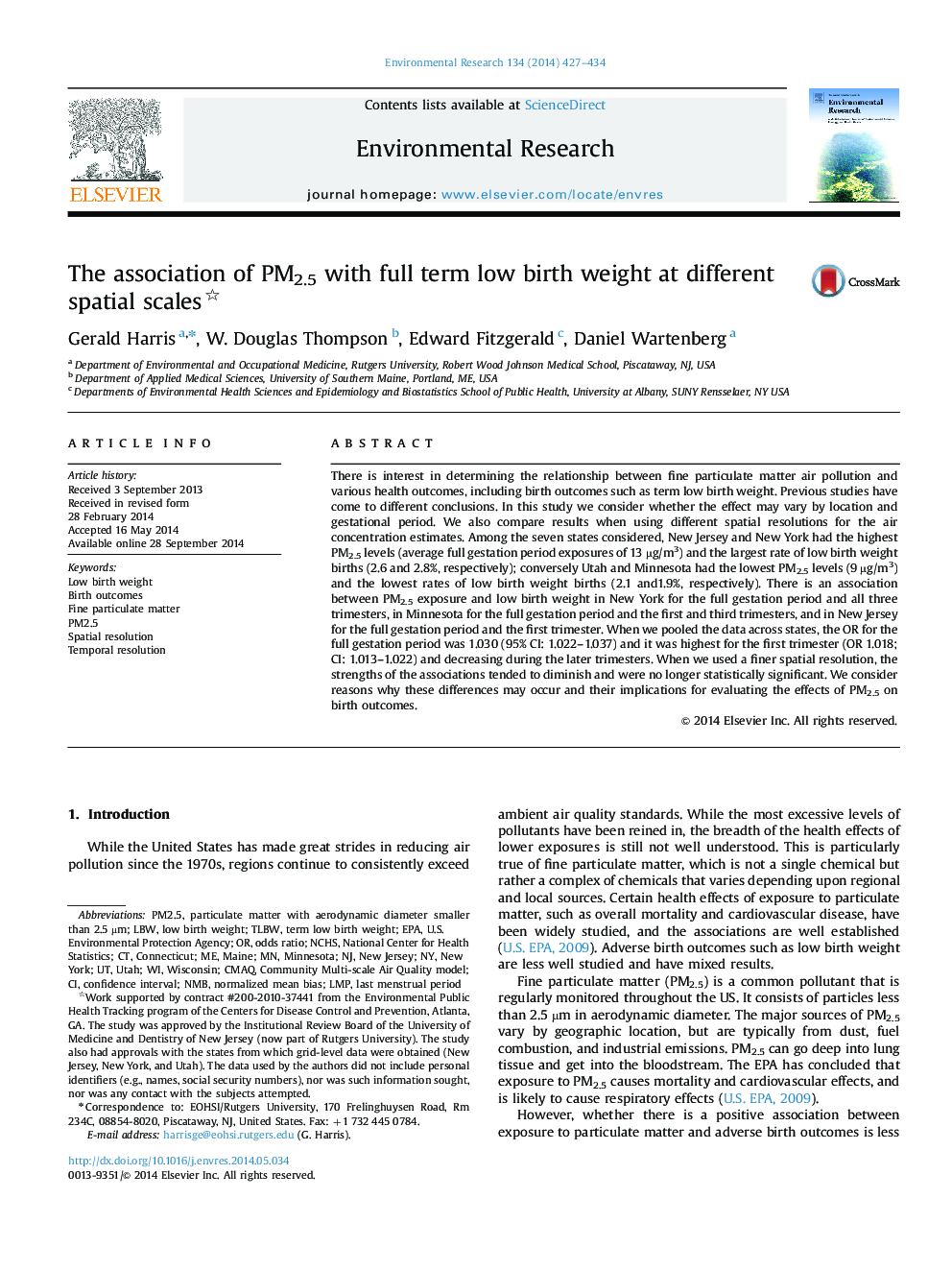| Article ID | Journal | Published Year | Pages | File Type |
|---|---|---|---|---|
| 6352589 | Environmental Research | 2014 | 8 Pages |
Abstract
There is interest in determining the relationship between fine particulate matter air pollution and various health outcomes, including birth outcomes such as term low birth weight. Previous studies have come to different conclusions. In this study we consider whether the effect may vary by location and gestational period. We also compare results when using different spatial resolutions for the air concentration estimates. Among the seven states considered, New Jersey and New York had the highest PM2.5 levels (average full gestation period exposures of 13 µg/m3) and the largest rate of low birth weight births (2.6 and 2.8%, respectively); conversely Utah and Minnesota had the lowest PM2.5 levels (9 µg/m3) and the lowest rates of low birth weight births (2.1 and1.9%, respectively). There is an association between PM2.5 exposure and low birth weight in New York for the full gestation period and all three trimesters, in Minnesota for the full gestation period and the first and third trimesters, and in New Jersey for the full gestation period and the first trimester. When we pooled the data across states, the OR for the full gestation period was 1.030 (95% CI: 1.022-1.037) and it was highest for the first trimester (OR 1.018; CI: 1.013-1.022) and decreasing during the later trimesters. When we used a finer spatial resolution, the strengths of the associations tended to diminish and were no longer statistically significant. We consider reasons why these differences may occur and their implications for evaluating the effects of PM2.5 on birth outcomes.
Keywords
PM2.5NMBCMAQLBWNCHSEPALMPlast menstrual periodU.S. Environmental Protection AgencyFine particulate matterconfidence intervalTemporal resolutionNational Center for Health StatisticsMaineMinnesotaBirth outcomesodds ratioNew JerseyNew YorkLow birth weightterm low birth weightSpatial resolutionWisconsinConnecticutUtah
Related Topics
Life Sciences
Environmental Science
Health, Toxicology and Mutagenesis
Authors
Gerald Harris, W. Douglas Thompson, Edward Fitzgerald, Daniel Wartenberg,
